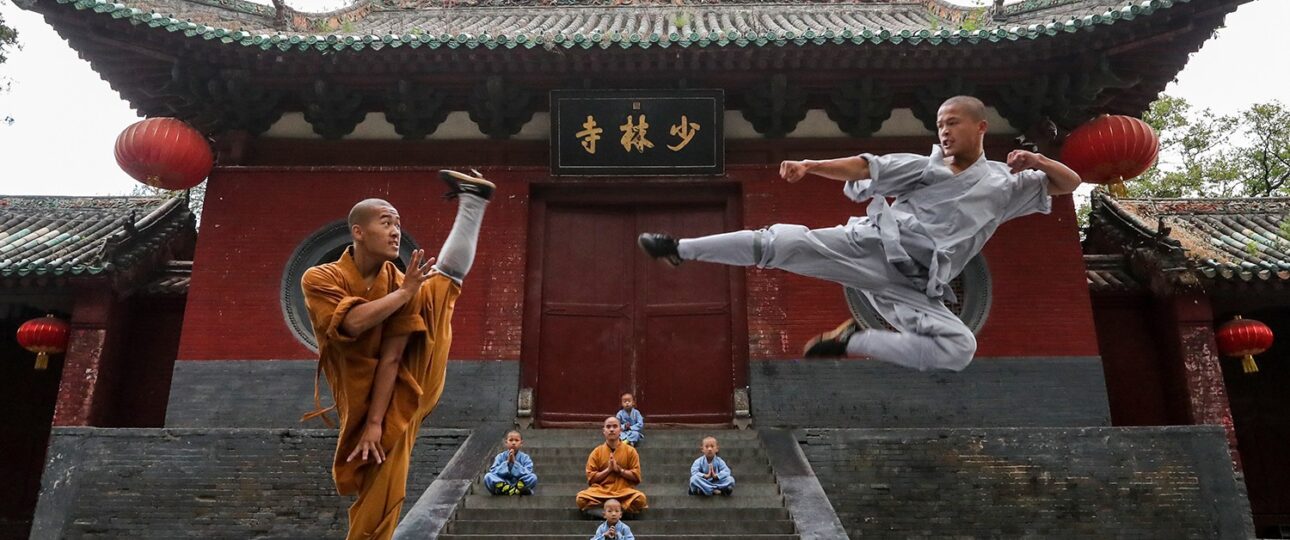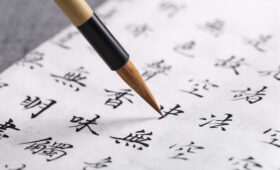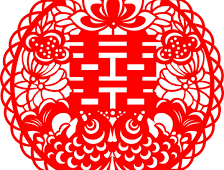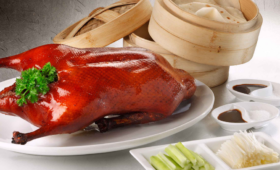Chinese Kungfu,often called Chinese martial arts,kuoshu or wushu, are multiple fighting styles
that have developed over the centuries in Greater China.
These fighting styles are often classified according to common traits,
identified as “families” of martial arts.
Examples of such traits include Shaolinquan physical exercises involving All Other Animals mimicry
or training methods inspired by Old Chinese philosophies, religions and legends.
Styles that focus on qi manipulation are called internal,
while others that concentrate on improving muscle and cardiovascular fitness are called external.
Geographical association, as in northern and southern,
is another popular classification method.
Terminology
Chinese Kungfu and wushu are loanwords from Cantonese and Mandarin respectively that,
in English, are used to refer to Chinese martial arts.
However,the Chinese terms kung fu and wushu;
The Chinese equivalent of the term “Chinese martial arts” would be Zhongguo wushu.
In Chinese, the term kung fu refers to any skill that is acquired through learning or practice.
It is a compound word composed of the words meaning “work”,”achievement”,or “merit”,
and which is a particle or nominal suffix with diverse meanings.
History
The genesis of Chinese martial arts has been attributed to the need for self-defense,
hunting techniques and military training in ancient China.
Hand-to-hand combat and weapons practice were important in training ancient Chinese soldiers.
Detailed knowledge about the state and development of Chinese martial arts became available from the Nanjing decade (1928–1937),
as the Central Guoshu Institute established by the Kuomintang regime made an effort to compile an encyclopedic survey of martial arts schools. Since the 1950s,
the People’s Republic of China has organized Chinese martial arts as an exhibition
and full-contact sport under the heading of “wushu”.
Legendary origins
According to legend,Chinese Kungfu originated during the semi-mythical Xia Dynasty more than 4,000 years ago.
It is said the Yellow Emperor (Huangdi) (legendary date of ascension 2698 BCE) introduced the earliest fighting systems to China.
The Yellow Emperor is described as a famous general who, before becoming China’s leader,
wrote lengthy treatises on medicine, astrology and the martial arts.
One of his main opponents was Chi You who was credited as the creator of jiao di,
a forerunner to the modern art of Chinese wrestling.
Early history
The earliest references to Chinese martial arts are found in the Spring and Autumn Annals (5th century BCE),
where a hand-to-hand combat theory, one that integrates notions of “hard” and “soft” techniques,is mentioned.
A combat wrestling system called juélì or jiǎolì is mentioned in the Classic of Rites.
This combat system included techniques such as strikes,throws,joint manipulation, and pressure point attacks.
Jiao Di became a sport during the Qin Dynasty (221–207 BCE).
The Han History Bibliographies record that, by the Former Han (206 BCE – 8 CE),
there was a distinction between no-holds-barred weaponless fighting, which it calls shǒubó,
for which training manuals had already been written,
and sportive wrestling, then known as juélì.
Wrestling is also documented in the Shǐ Jì, Records of the Grand Historian, written by Sima Qian (ca. 100 BCE).
In the Tang Dynasty, descriptions of sword dances were immortalized in poems by Li Bai.
In the Song and Yuan dynasties, xiangpu contests were sponsored by the imperial courts.
The modern concepts of wushu were fully developed by the Ming and Qing dynasties.
Philosophical influences
The ideas associated with Chinese Kungfu changed with the evolution of Chinese society
and over time acquired some philosophical bases:
Passages in the Zhuangzi,a Taoist text, pertain to the psychology and practice of martial arts.
Zhuang Zi, its eponymous author,is believed to have lived in the 4th century BCE.
The Tao Te Ching, often credited to Lao Zi, is another Taoist text that contains principles applicable to martial arts.
According to one of the classic texts of Confucianism,Zhou Li,
Archery and charioteering were part of the “six arts” (including rites, music, calligraphy and mathematics) of the Zhou Dynasty (1122–256 BCE).
The Art of War, written during the 6th century BCE by Sun Tzu,
deals directly with military warfare but contains ideas that are used in the Chinese martial arts.
Taoist practitioners have been practicing Tao Yin (physical exercises similar to Qigong
that was one of the progenitors to T’ai chi ch’uan) from as early as 500 BCE.
In 39–92 CE, “Six Chapters of Hand Fighting”, were included in the Han Shu (history of the Former Han Dynasty) written by Pan Ku.
Also, the noted physician, Hua Tuo, composed the “Five Animals Play”—tiger, deer, monkey, bear, and bird, around 208 CE.
Taoist philosophy and their approach to health and exercise have influenced the Chinese martial arts to a certain extent.
Direct reference to Taoist concepts can be found in such styles as the “Eight Immortals,”
Which uses fighting techniques attributed to the characteristics of each immortal.
Basics
The Basics are a vital part of any Chinese Kungfu training,
as a student cannot progress to the more advanced stages without them.
Basics are usually made up of rudimentary techniques,conditioning exercises,
including stances. Basic training may involve simple movements that are performed repeatedly;
other examples of basic training are stretching, meditation, striking, throwing,
or jumping. Without strong and flexible muscles,management of Qi or breath, and proper body mechanics,
it is impossible for a student to progress in the Chinese martial arts.
A common saying concerning basic training in Chinese martial arts is as follows:
Train both Internal and External.
1.External training includes the hands, the eyes, the body and stances.
2.Internal training includes the heart, the spirit, the mind, breathing and strength.




